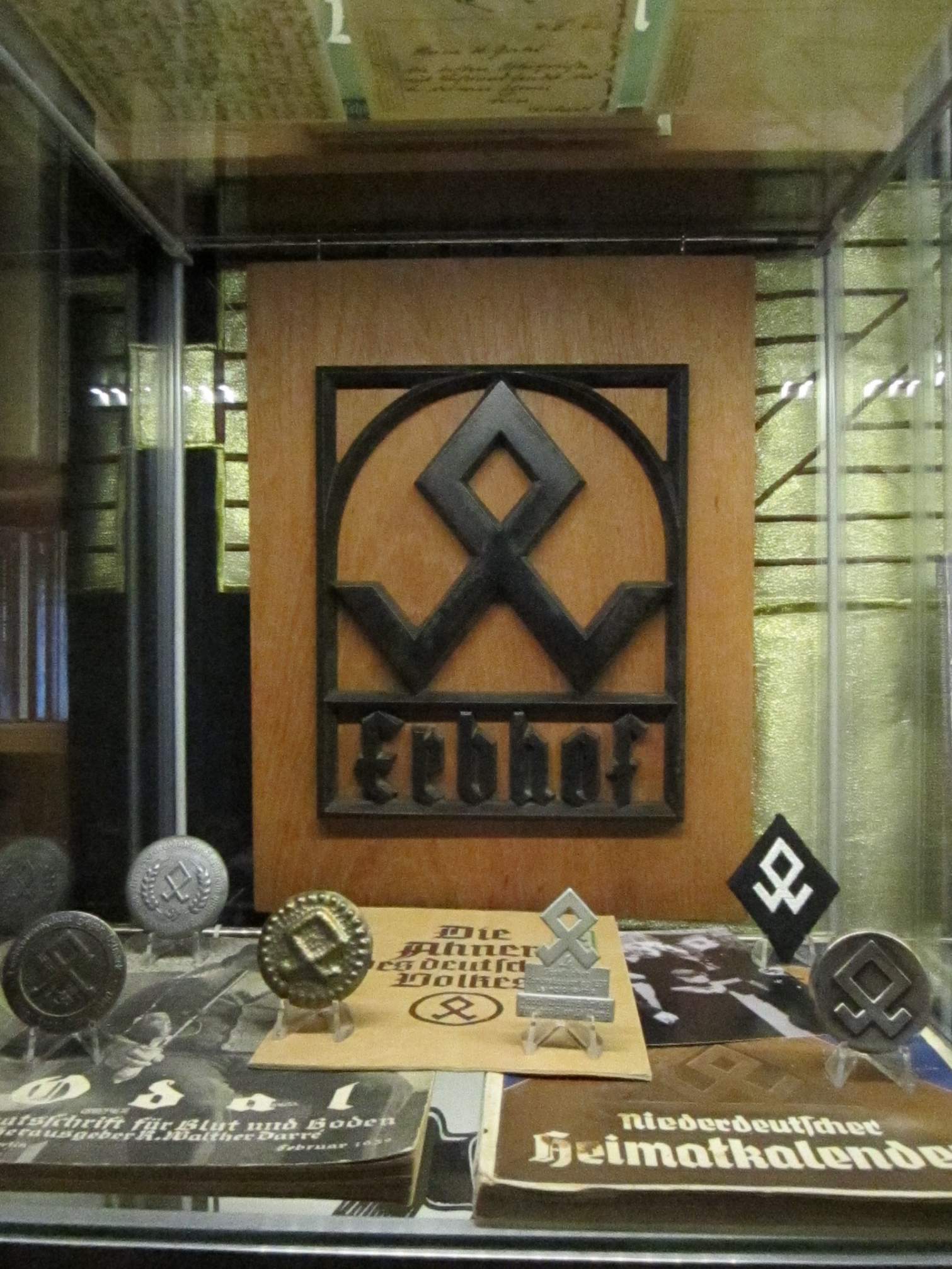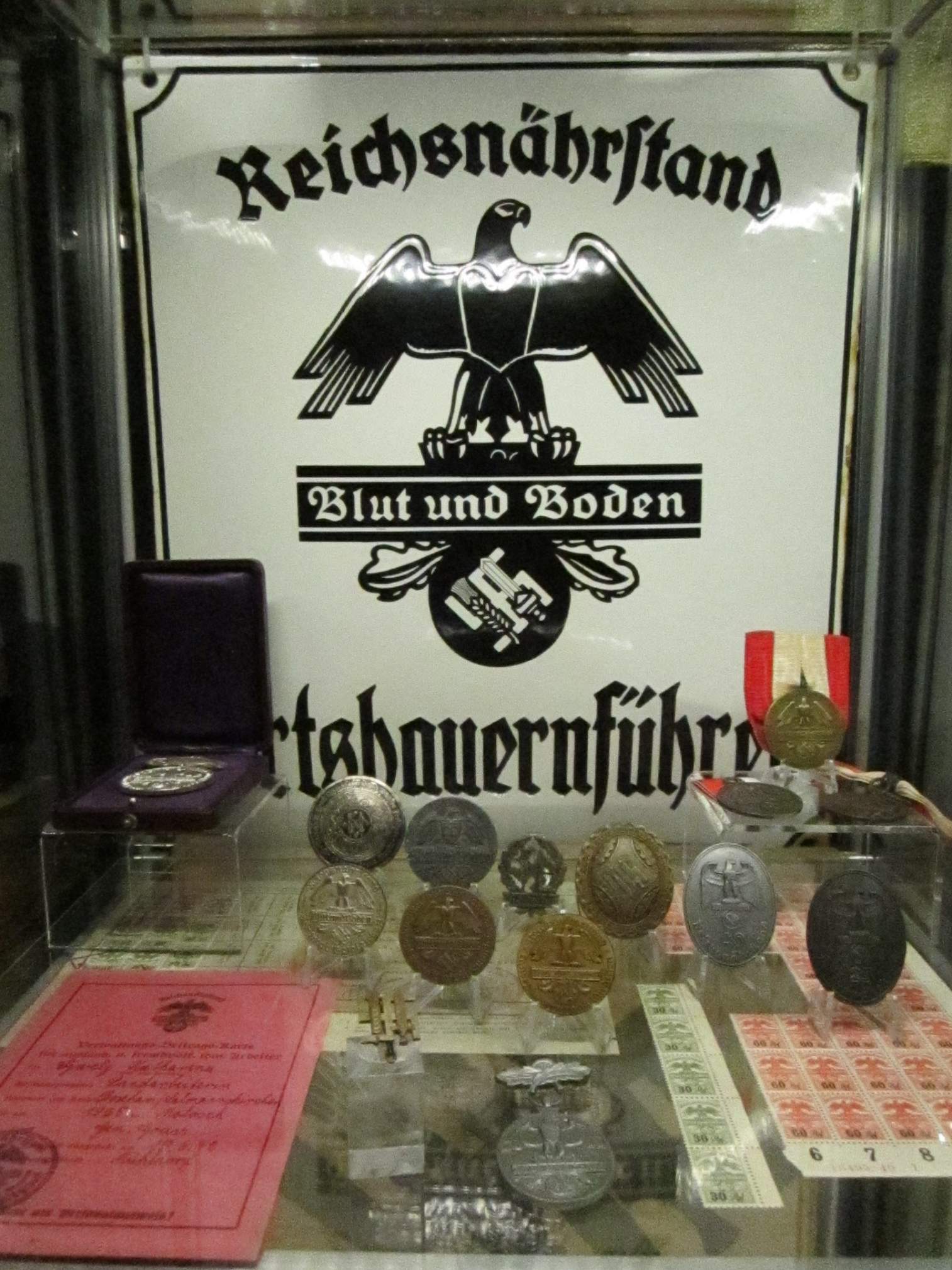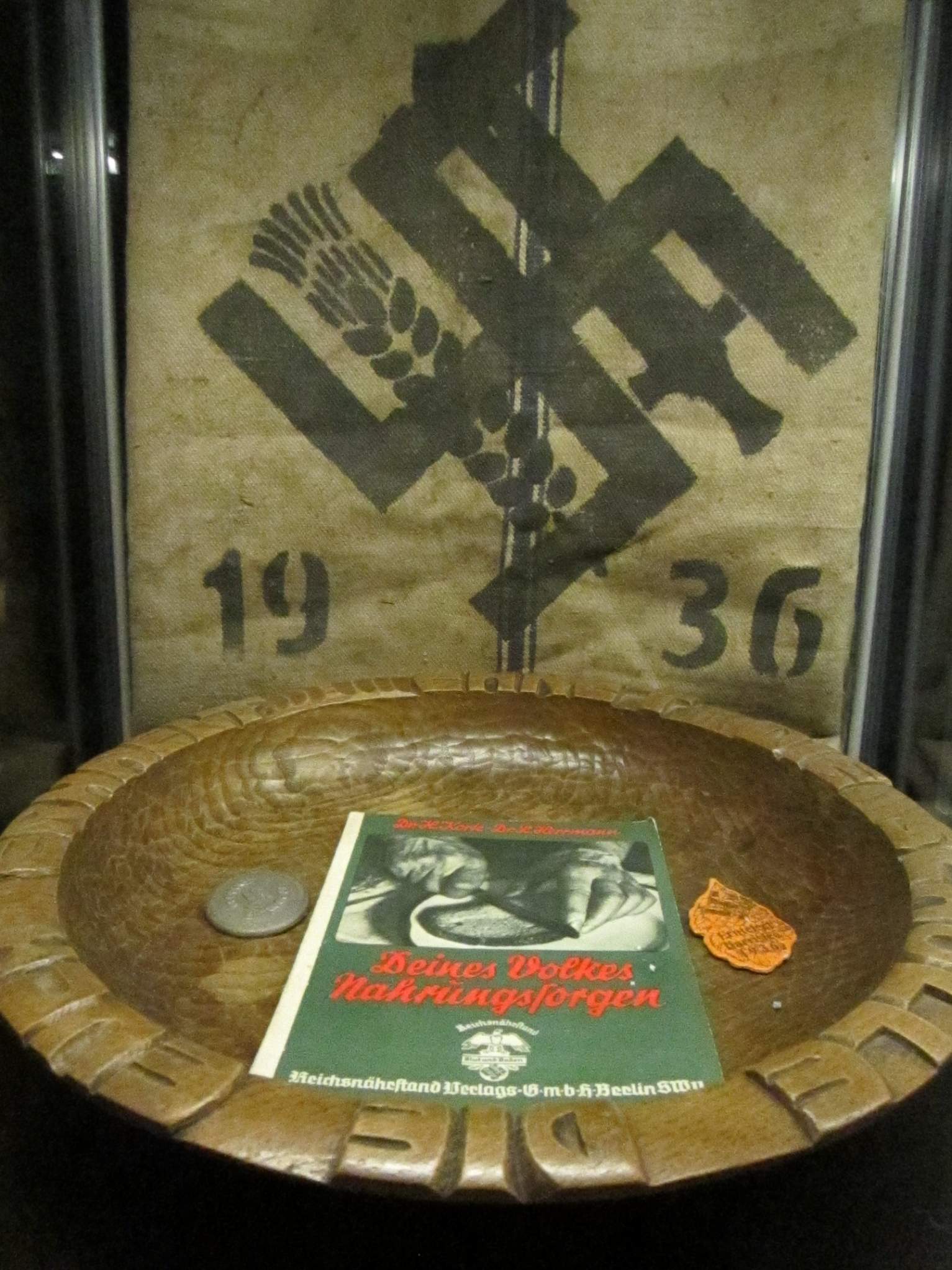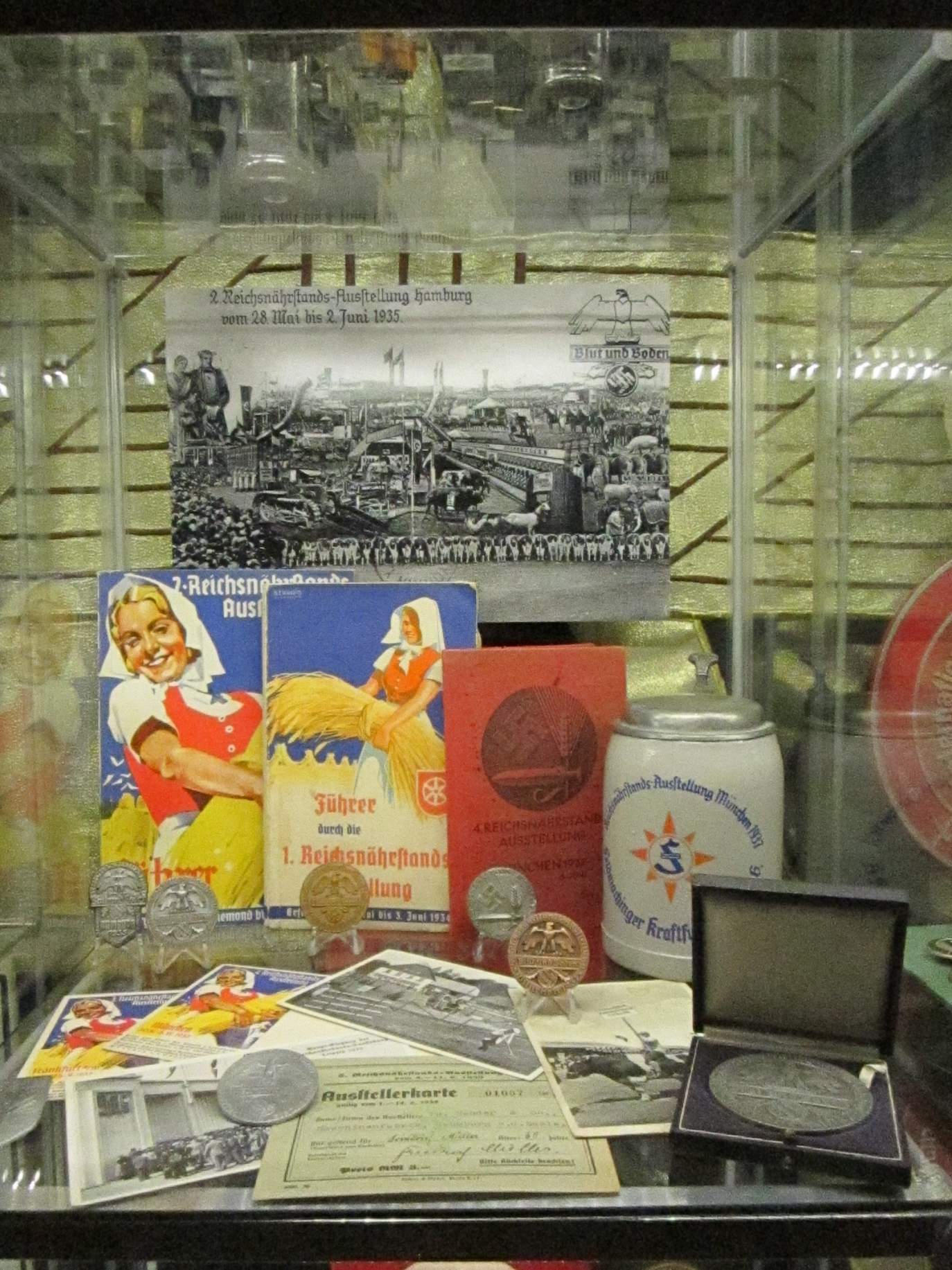**Neuadel aus Blut und Boden: Although first coined by the Social Democrat August Winnig, ‘Blood and Soil’ (Blut und Boden) became the motto of the Reichsnährstand, the Nazi agency responsible for food and farming, and before that figured in the title of a Walther Darré’s important book Neuadel aus Blut und Boden (A New Nobility From Blood And Soil, first published 1930).**
- A New Nobility of Blood and Soil by Richard W. Darré
English translation, ANTELOPE HILL PUBLISHING [English translation]
https://antelopehillpublishing.com/product/a-new-nobility-of-blood-and-soil-by-richard-w-darre/





**A marked grain sack and bread plate**

**Two Fahnenspitzen with a display of day badges.**


Various awards for animal breeding (etc.) awarded by the Reichsnährstand and affiliated organisations.

Also included are several badges relating to the of Reichsbund der Kleingärtner und Kleinsiedler (Allotment Gardeners and Small Holders). Incidentally, the first leader of the Reichsbund was Hans Kammler, who ended his career as an SS Obergruppenfuhrer.

Two Reichsnährstand metal signs.

